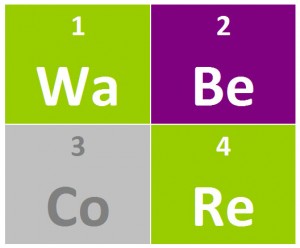Comprehensive Guide to Enterprise IT Service Automation
IT support automation uses software workflows, rule engines, AI/ML, and integrations to automate...
Though IT projects (and projects in general, for that matter) can fail for any number of reasons, four ingredients are vital and common to all successful projects. Research and experience have shown...

Though IT projects (and projects in general, for that matter) can fail for any number of reasons, four ingredients are vital and common to all successful projects. Research and experience have shown that having all of these elements in place greatly improves the odds of success, while the absence of any one dramatically increases the risk of failure.
 The first and most fundamental requirement for success is that the stakeholders in the project have to want it to succeed. This may seem so blatantly obvious as to be not worth mentioning, as IT projects in general are designed to alleviate some sort of corporate pain. But stakeholders may consciously or unconsciously create barriers to success if they don’t understand the project or are simply resistant to change. You can lead a horse to water, but…
The first and most fundamental requirement for success is that the stakeholders in the project have to want it to succeed. This may seem so blatantly obvious as to be not worth mentioning, as IT projects in general are designed to alleviate some sort of corporate pain. But stakeholders may consciously or unconsciously create barriers to success if they don’t understand the project or are simply resistant to change. You can lead a horse to water, but…
Chris Rixon summarizes this nicely in a post on BMC Communities, writing “While it’s crucial that all stakeholders believe in the mandate for change, they are more likely to be invested if they want it to happen,” and that wanting the change improves other aspects of project execution including problem-solving and teamwork.
So how does one instill this desire among stakeholders? It isn’t enough merely to ask people what they want. As with microwave ovens in the 70s, VCRs in the 80s, web browsers in the 90s, and smartphones in the 00s, people didn’t know they wanted these new-to-the-world products until they were developed.
Understanding wants therefore requires some ability to anticipate what users will embrace. It also means “bringing them along for the ride,” involving users early on in defining goals and metrics. As Chris put this in his post, “Invite all team members to define a shared view of success, and you may be surprised to find that even the most hardened skeptics will temper their objections. Their participation is vital to reinforcing the vision and its credibility.”
But the ultimate in creating that want is to empower users to do things for themselves. People take pride in creation (for example, if anyone has ever served you a salad containing vegetables they grew themselves, they almost certainly made a point of telling you those veggies came straight from the garden).
In the IT project world, an example is mapping business processes as part of an enterprise request management (ERM) implementation. Enabling business process owners (e.g., finance or HR managers) to design, test, modify, and deploy their own service fulfillment processes, with minimal IT assistance, increases efficiency and accelerates the rollout of new services, while increasing adoption through that pride in creation.
The second requirement for project success is belief that it can succeed. The U.S. scientific community accepted President Kennedy’s 1961 challenge to put a man on the moon by the end of the decade because, as audacious as the goal was, they had confidence it could be done. Had he asked for, say, room-temperature nuclear fusion in the same timeframe, the scientific response would likely have been less enthusiastic.
One of the most effective ways to demonstrate viability is through an agile approach. For example, the goal in ERM of using a single portal to manage any type of service request, from all shared-services groups across an enterprise, can seem daunting at first. Taking an agile approach to service management—starting with just one or a few processes or services, then building upon early successes—reinforces confidence in scaling request management horizontally across the organization.
The third essential element for success is collaboration. Successful projects require high-functioning teams, which Chris characterizes as ” small, yet focused and inclusive,” including individuals with expertise in project management, relevant IT specialties and business functions, and service delivery management.
The ideal size for the project team will vary by project scope and complexity. But teamwork is in our DNA, and we recommend forming teams that are as small as feasible, as large as needed, and as passionate as possible.
The final ingredient needed for project success is resources. No project can succeed without adequate levels and the right mix of people, time, space, equipment, outside help, and technology.
IT projects, unfortunately, have a reputation for going over budget. According to management consulting firm McKinsey, nearly half of all IT projects (and two-thirds of software projects) exceed their initial budget allotments.
Three keys to help assure adequate resource allocations without busting the budget are:
Every new project entails some risk of failure. But to avoid all risk would mean avoiding opportunities to grow and improve. By ensuring that projects clearly address the wants of stakeholders, inspire confidence, optimize collaboration, and have adequate resources, organizations can maximize the odds of project and operational success.
Learn more:

IT support automation uses software workflows, rule engines, AI/ML, and integrations to automate...

Business process reimagined is the strategic renewal of how work gets done by combining modern digital...

You've probably noticed (what we're calling) the "logo-swap test" lately: all the AI ads in market sound...